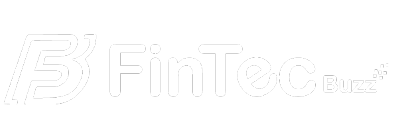Learn how embedded finance and financial wellness benefits are reshaping the modern workforce.
Nico, we’re delighted to have you at FintecBuzz. Could you start by sharing your professional journey and how it led you to co-found Clair?
I began my professional career after college at J.P. Morgan, where I worked on projects involving hourly rideshare drivers. This helped me gain a deeper understanding of the fintech space and the obstacles that workers face to reach financial stability. Despite already earning their pay, they don’t have immediate access to it, if they need to cover for unexpected expenses. After working an hourly job in college, I experienced firsthand how incredibly frustrating it could be to wait weeks for my paycheck, and sometimes even longer as a result of processing errors. As a student managing my personal budget, in a new country, I could only imagine the level of frustration for individuals providing for their families financially.
This served as my inspiration for creating Clair, a solution to provide a flexible way for employees to get a portion of their pay before payday. Solving the gap between work and pay, and with 78% of Americans living paycheck to paycheck the ability to access their next paycheck ahead of the designated date can make all the difference.
How has payroll technology traditionally operated, and why do these methods no longer meet the needs of today’s employees?
While payroll providers have traditionally issued paychecks on a biweekly cycle, the world is moving toward faster technology and instant money transfers, yet payday remains stuck in an outdated system. Our perspective at Clair is that people should be allowed to get paid as soon as they clock out, especially since they’ve already done the work to earn that money.
Additionally, payroll technology has historically been clunky, which means it’s difficult and time-consuming for employees to use. More employers are recognizing these pain points, as 58% mentioned technology integration as one of the top areas of improvement for their payroll providers, and another 29% said tech modernization is a major concern. In order to meet the needs of the modern workforce, Clair decided to partner with a national bank to provide compliant earned wage access (EWA) to America’s workforce. Our team has worked tirelessly over the past few years to offer a banking infrastructure and compliance framework that makes accessing on-demand pay seamless. We’ve brought this – and our proprietary technology – to industry-leading HR platform partners like Gusto and TriNet, so the companies using their tools can easily offer on-demand pay to their workers.
We just announced in July that Clair grants employees at many of Gusto’s 300K supported businesses access to sign up for On-Demand Pay right in the Gusto Wallet app. This makes Gusto the first partner to announce Clair’s new embedded On-Demand Pay product, which leverages proprietary technology to provide an embedded, compliant EWA solution that integrates directly into workforce management and payroll applications.
We also recently partnered with payroll infrastructure company Check, which selected Clair as its first EWA partner. HR platforms using Check to build and launch their payroll businesses can seamlessly opt into offering Clair’s fully compliant, On-Demand Pay solution, without any impact to payroll and changes to HR.
It’s been a busy year for our team, but we’re happy to be at the forefront of a larger shift toward embedded finance in the HR and payroll industry.
Can you explain how embedded finance is converging with payroll technology and what benefits this convergence brings to both employers and employees?
We’re seeing more embedded finance tools integrated into HCM platforms for seamless use and adoption. APIs, for example, allow for financial experiences to be embedded into existing HR apps to create a “one-stop shop,” providing a more user-friendly design similar to that of consumer apps. About 41% of employees are already overwhelmed by the number of tools and technologies they’re required to use, so streamlining their HR tech stack is key.
By providing employees with one platform where they can access multiple benefits, including financial wellness tools, HR can have a better view of what’s important to employees in the workplace. This can help executives make data-driven choices, reduce the time and resources required to train employees on new benefit tools and help overall employee satisfaction and productivity.
With a top-requested benefit like earned wage access, for example, building an embedded experience is key. It’s typically complicated for HR tech to build, so finding a compliant partner that has the right tech infrastructure in place is critical. Clair’s On-Demand Pay product removes all manual work required to roll out the benefit, and that includes any manual changes to employee counts or payroll.
Why is it important to give employees flexibility when they get paid, and how does this flexibility impact employee satisfaction and retention?
For employers who are still dealing with labor shortages in essential fields like healthcare and manufacturing, offering flexible benefits like on-demand pay can be a game changer in employee satisfaction, which leads to retention. With benefits like on-demand pay, employers can help their workers get better financial footing and stand out in the labor market. Companies that go one step further to ensure embedded finance benefits are available within their existing HR apps can also gain a significant advantage, such as lessening burnout among their HR teams and prioritizing workers’ well-being and user experience, to ultimately differentiate themselves as a top employer.
With 68% of employees using financial wellness services provided by their employers in 2023, up from 51% in 2012, what does this trend indicate about the evolving needs of the workforce?
This indicates a few things about today’s workforce. They’re dealing with stressors – like unexpected expenses, student loan payments, or inflation increasing the cost of living – and they appreciate the help and support of their employers. They also want both long-term and short-term financial wellness benefits. Offering 401(k)s for long-term savings is important but many workers need help now and can benefit from access to their pay outside of the bi-weekly pay cycle, budgeting tools, financial education and more. Simply put: Employees want more flexibility and control over their finances and financial wellness benefits help deliver that.
Why is it crucial for payroll tech providers to partner with financial wellness benefit providers who understand regulatory complexities and ensure long-term compliance?
Service disruptions can be a headache and if a financial wellness benefits partner isn’t compliant, it can turn into a nightmare for employers and their employees. That’s why it’s critical to identify a partner who not only understands regulatory complexities but is also compliant, which gives employers peace of mind while extending support and buy-in from executives. When it comes to EWA in particular, it’s no longer just an advantage but rather a need as the CFPB recently proposed that EWA products should be recognized as loans, and states are also constantly enacting their own laws. This can lead to interrupted service with EWA providers that are not compliant, when laws change.
Additionally, Millennials and Gen Z-ers make up the majority of today’s professionals and have grown up with consumer-friendly apps with embedded finance experiences, like Venmo and Uber. As a result, they now expect the same app and software experiences that prioritize convenience and are designed with sleek and simple interfaces. By embedding financial offerings into HR management apps, users can easily find what they need without the extra step of extensively searching workflow documents or contacting customer support. With the help of innovative HR tech and fintech teams leveraging APIs and building proprietary technology, this experience can be brought to life. By minimizing employee confusion and lessening time-consuming questions for HR teams, workplaces can also see a rise in employee engagement rates.
Based on your experience, what advice would you give to employers looking to update their Workforce Management and Human Capital Management systems to better meet the needs of their employees?
Make it as easy as possible to keep everything integrated! Employees do not have the time or energy to navigate a new app or tool in their workflow management processes. They’re already occupied with their daily job responsibilities, so the additional task of spending time updating payroll information or logging into yet another insurance portal creates productivity obstacles. By making tools simpler and more seamless, workers are more likely to utilize them on a day-to-day basis and it makes it easier to onboard future employees.
In closing, what final thoughts or key messages would you like to share about the future of payroll technology and the importance of integrating financial wellness services for a modern workforce?
Embedded finance is key to reshaping the way employers approach employee benefits and workplace management. It’s been exciting to see the demand for financial wellness benefits increasing recently among employers and professionals. We’re excited about expanding access to On-Demand Pay and to see the noticeable impacts on employees’ lives.
Stay Ahead of the Financial Curve with Our Latest Fintech News Updates!




